June has gone, so it’s time to reveal my trout and grayling…
“Go-To” flies for July fishing on the Welsh Dee
i.e. fly patterns that I have found to consistently catch fish.
If you are new to fly fishing, these flies will help you catch trout and grayling on the Welsh Dee. Also, they should be helpful to the more seasoned anglers who plan to fish the Welsh Dee for the first time.
Before we dive in…
It’s worth highlighting the natural flies that are likely to be seen on the Welsh Dee in July.
Upwinged flies:
- Iron Blue Dun
- Blue-winged Olive
- Yellow May Dun
- Yellow Sally
- Small Dark Olive
- Pale Watery Dun
- Medium Olive
Sedges :
- Black sedge
- Cinnamon sedge
- Yellow Sedge
- Welshman’s Button
Others :
- Black Gnat
- Midges
- Daddy Longlegs
- Caenis
Based on the variety of natural flies, you’d think to catch trout and grayling that an extensive selection of artificial fly patterns would be required.
However, after analysing my detailed fishing log, I was surprised that selecting the best-performing flies for July wasn’t too difficult, because….
75% of all the fish I have caught in July were on three wet flies:
My top 3 performing flies for July on the Welsh Dee
- 30% on WMB #12
- 25% on Pearl-ribbed March Brown spider #14
- 20% on Black Hopper #14
Therefore, if it’s not clear what trout and grayling are feeding on, my recommendation would be to start with a three-fly cast on a 3lb copolymer (point: size 12,
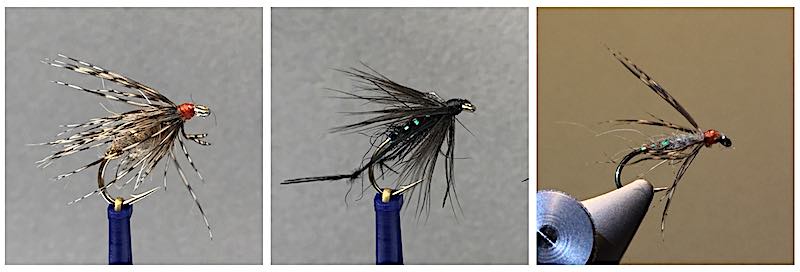
If you are new to fly fishing and want to fish just one fly on the Welsh Dee in July. Then it would have to be a…
WMB (size 12 or 14)
So, what is a WMB?
It’s nothing fancy…
It’s just a weighted March Brown Spider pattern, but it is special because it’s a great all-rounder.
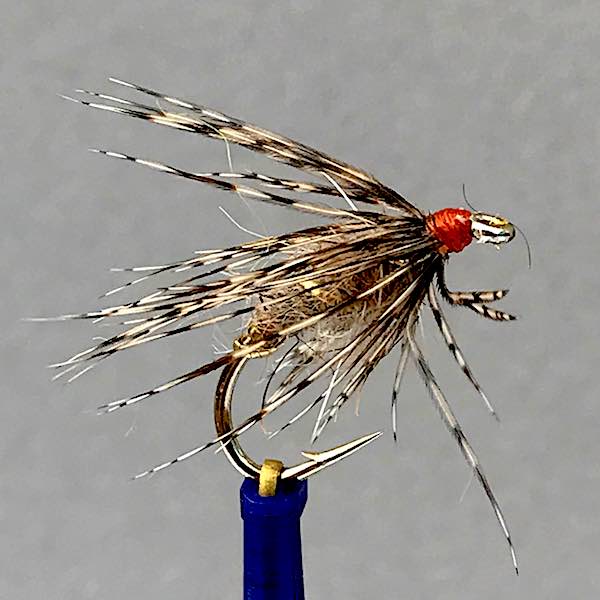
WMB (weighted March Brown)
- Hook: #12 Kamasan B170
- Thread: Rusty orange UNI 8/0
- Underbody: Fine lead wire
- Body: Hare’s ears fibres of varying length & colour
- Rib: Fine oval gold tinsel
- Hackle: Brown partridge neck feather
I came across this fly pattern in the May 1997 edition of Trout & Salmon magazine. In an article entitled ‘Make Mine A WMB’ by Bob Nunn. Who claimed…
“one fly is usually all you need for river fishing”
Intrigued by the article, I tied a few and started experimenting with it on the Welsh Dee and, for over 20 years, I’ve not been without a few in my fly box.
It also works well on the other northwest river I fish, where it has been the downfall of plenty of trout and grayling.
In addition to the many trout and grayling, I’ve caught quite a few Welsh Dee sea trout during the day on the WMB.
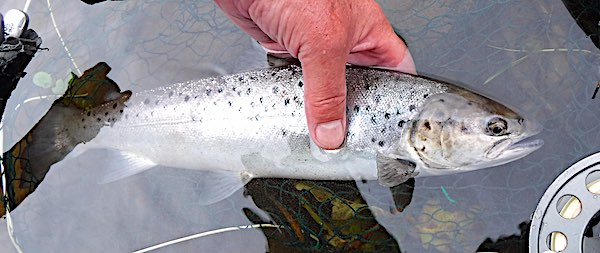
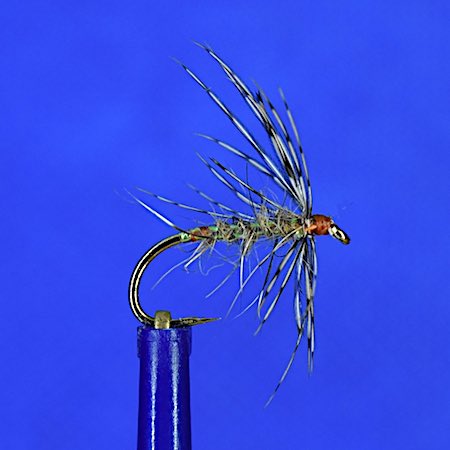
Pearl-ribbed March Brown Spider
- Hook: Kamasan B170 #14
- Thread: Tan UNI-Thread 8/0
- Body: Fox squirrel dubbing
- Rib: Uni Pearl Mylar (1/32)
- Hackle: Brown partridge neck feather

Black Hopper
- Hook: Kamasan B170 size 14
- Thread: Black UNI-Thread 8/0
- Body: Black seal fur substitute
- Rib: Uni Pearl Mylar (1/32)
- Legs: Black pheasant tail
- Hackle: Black (natural) hen
Where best to fish the wet flies in July?
When the Welsh Dee is at its summer level, it’s best to focus your fly fishing efforts in the following sections of the river:
- the fast water leading into deep pools;
- shady areas, particularly under overhanging trees & bushes;
- alongside weed beds, large rocks, ledges, and snags;
- the tails of pools, especially in the evening.
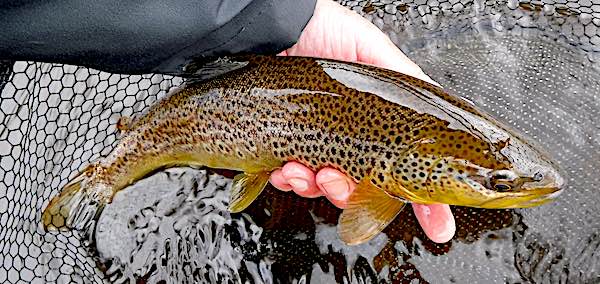
Now let’s consider what to do if the above fails to catch trout and grayling.
Dry flies for July on the Welsh Dee:
When trout and grayling are preoccupied with taking dry flies, the best approach is to try and match the hatch.
If you cannot match the hatch, then tying a small Grey Duster dry fly onto a tapered leader should fool a few trout and/or grayling.
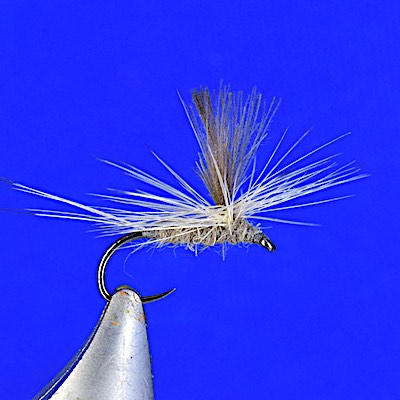
Grey Duster
- Hook – HENDS BL354 (#14 to 20)
- Thread – Grey 8/0
- Tail – Badger cock fibres
- Wing Post – single CDC feather
- Body – Rabbit underfur
- Hackle – Badger cock
Often during July, you will spot fish sipping something indistinguishable from the surface. When this happens, I find it best to try either a small Griffith’s Gnat or a Black Gnat dry fly pattern.
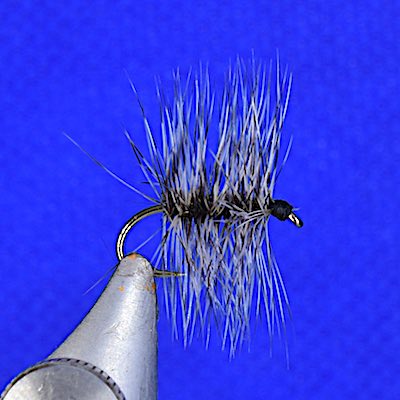
Griffith’s Gnat
- Hook: Kamasan B170 size 18
- Thread: Black UNI 8/0
- Body: Peacock herl
- Hackle: palmered Grizzle cock
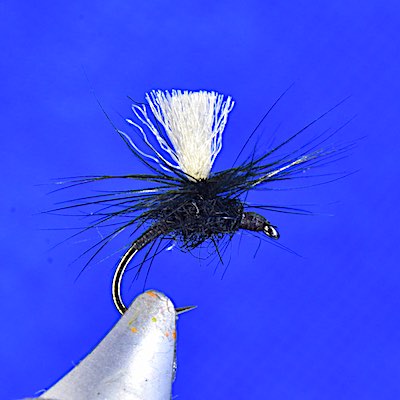
Black Gnat
- Hook – Kamasan B100 (#16 to 20)
- Thread – Black 8/0
- Wing post – Cream Antron yarn
- Body – Black 8/0 head
- Thorax – black dubbing
- Hackle – black cock
To help track these small flies on the river, it’s sometimes beneficial to fish them behind a larger sight fly, such as an Elk Hair Caddis.
On bright sunny days when the river is low and crystal clear, you might find that dry and wet fly fishing fails to catch fish.
So, let’s now consider what you might do to avoid a blank…
Nymph flies for July:
Euro / Czech nymphing isn’t everyone’s cup of tea…
However, it’s worth having in your armoury because when the fish are feeding on the riverbed, it’s the best way to catch them.
Consider the following scenario…
after great sport on wet or dry flies in the morning, the river turns dead from mid-day until the sun starts to set
How do you fill in the hours until the evening rise?
- Go to the pub for a long lunch and a rest, which is not a bad shout.
Or have your lunch on the river bank and…
- Search for where the fish have gone.
If it’s the latter, you will need to switch to nymphing the fast runs and deep shady pockets of water, where you will often find trout and grayling feeding on small nymphs.
Over years of practice, I’ve found fishing a couple of small nymphs (#16 or #18) above a heavy (ca. 4-5mm) tungsten bead point nymph works well.

Normally, one of the following simple nymphs (size 16 or 18) will catch trout and grayling…
- Pheasant tail nymph with a 1.5mm copper tungsten bead
- Peacock quill nymph with a 1.5mm copper tungsten bead
- Red nymph with a 1.5mm gold tungsten bead
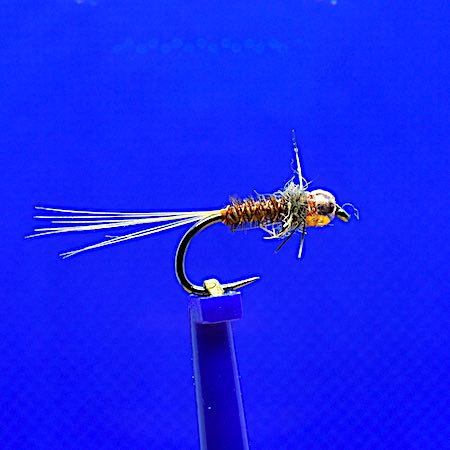
Pheasant tail nymph
- Hook – HENDS BL354 #16 & 18
- Bead – 1.5 tungsten (copper, neutral)
- Thread – Rusty Orange UNI-Thread 8/0
- Tail – Ginger cock
- Body – Pheasant tail fibres
- Rib – Fine copper wire
- Thorax – Hare’s Ear dubbing

Peacock Quill nymph
- Hook – Kamasan B100 size 16 or 18
- Bead – 1.5 tungsten bead
- Tail – Coq De Leon fibres
- Thread – Grey UNI-Thread 8/0
- Body – Stripped peacock quill
- Thorax – Light Hare’s Ear dubbing
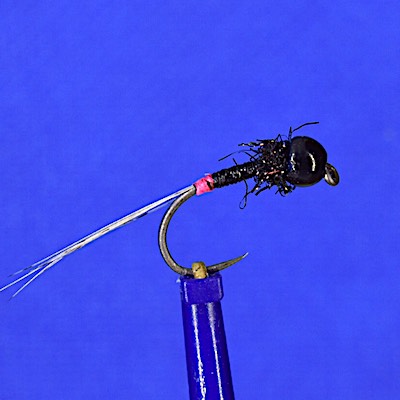
Black nymph
- Hook – HENDS jig #16 & 18
- Bead – 1.5 black tungsten
- Body – Black UNI-Thread 8/0
- Tag – Pink thread 8/0
- Thorax – Black Glister dubbing
To learn more about fishing on the Welsh Dee during July I’ve listed a selection of additional blog posts…
- July fishing report from the banks of the beautiful Welsh Dee
- Fishing with new friends on the wonderful Dee
- July is the time for beautiful sea trout
- How to catch grayling in the heat of summer on the Welsh Dee
I hope you’ve found this post on flies for July interesting, and if you’re interested in fishing the Welsh Dee, it has some good Day Ticket water for fly fishing.
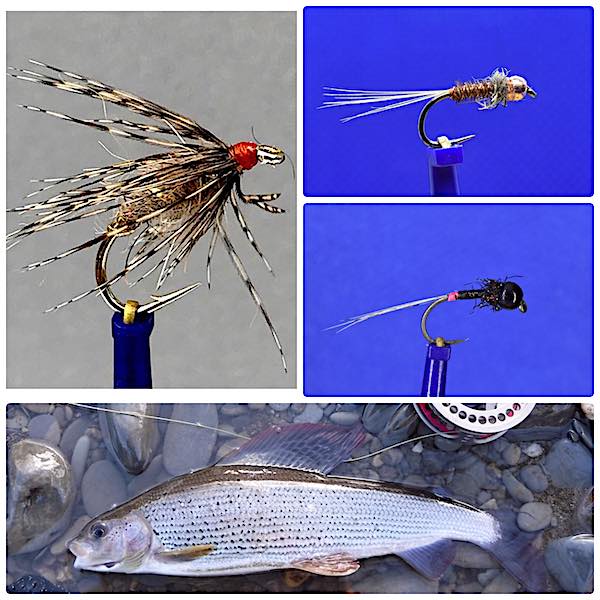
Hi Andrew, new to all this so lots to learn. Hoping to fish Bangor on Dee next week. With the WMB do you buy a fly like that or just weight it yourself?
Hi Jack,
I tie them myself. Not come across weighted versions for sale.
Good luck at BoD.
Andrew
WMB
you say primrose thread but show one with a RED head ! Which should it be?
About to try them out on the Dee at Llangollen next week.. Thanks for all your advice and the best of blogs.
Hi Rodney,
It should be rusty orange thread – I’ve corrected the post now.
Good luck, Andrew
Many thanks Andrew, most useful articles that I look forward to receiving.
Hi Paul,
Great to hear you are finding them interesting.
Thanks for the feedback. Tight lines, Andrew
Fished the Dee yesterday using the wet fly team you suggested for July. Had 4 on the black hopper and one on the pearly MB. Thanks for your efforts in putting these articles together. Much appreciated.